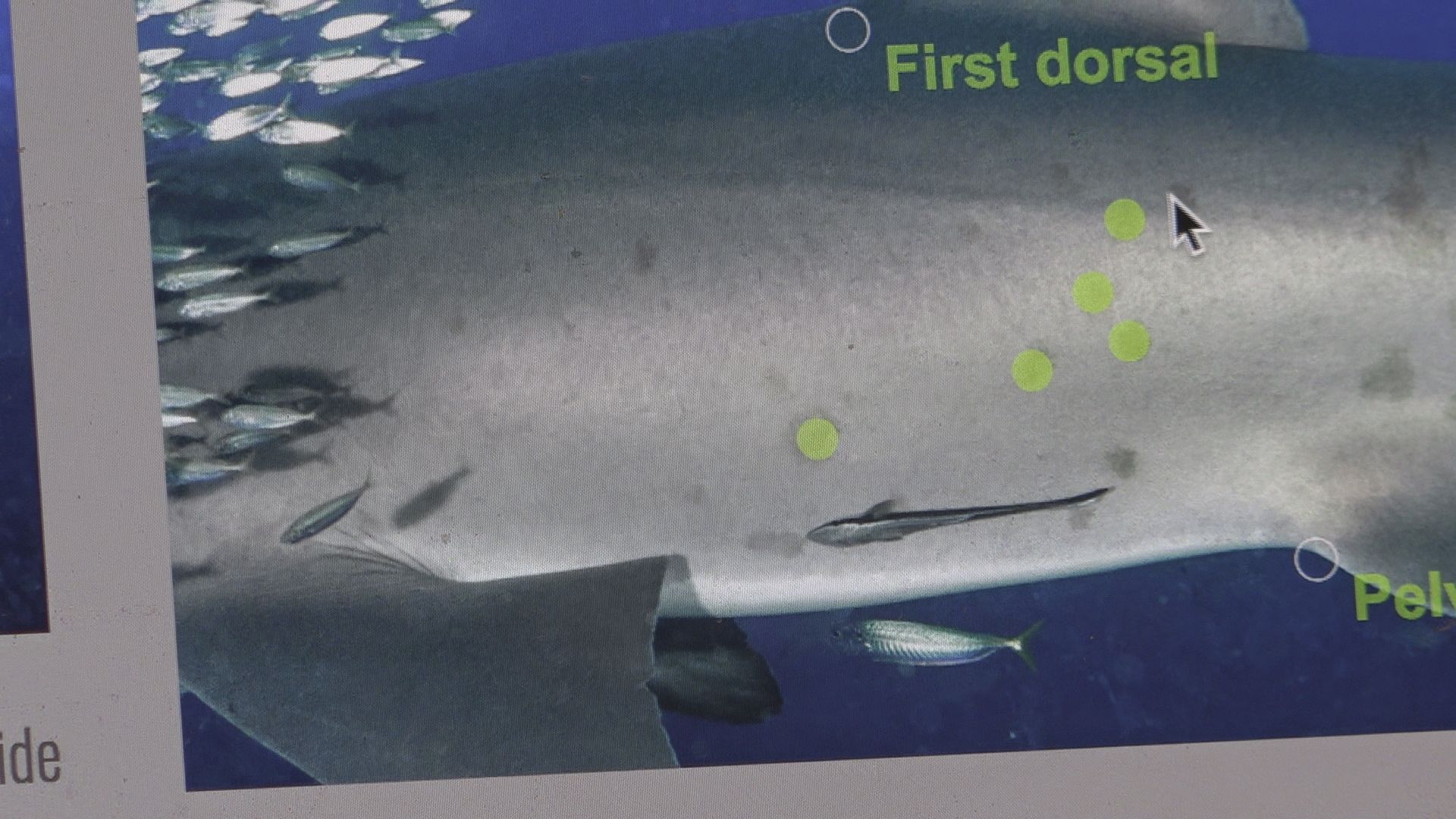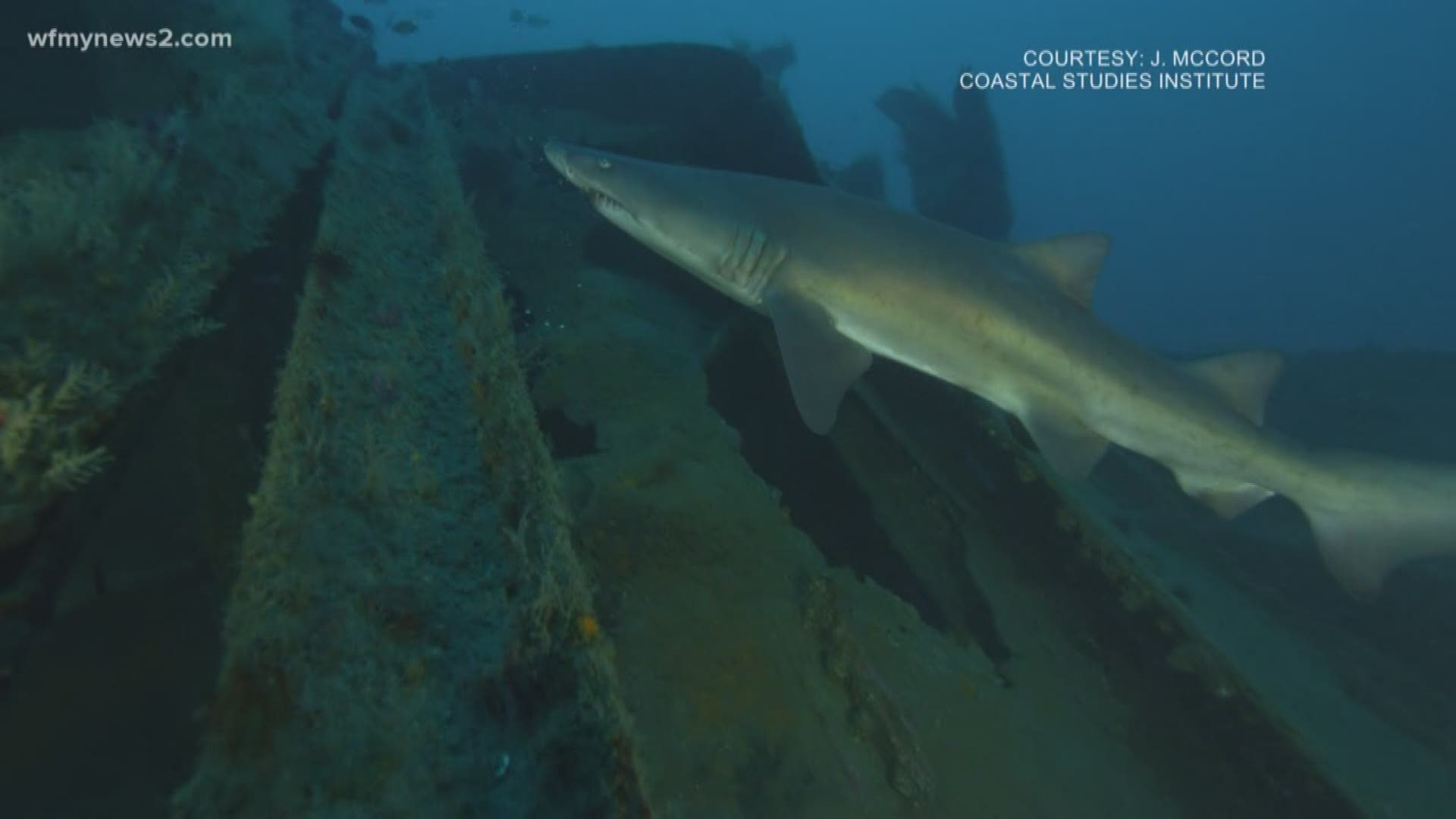PINE KNOLL SHORES, NC -- Sharks fascinate us all, there's even a week dedicated to the fish at the top of the ocean food chain. The giant creatures that lurk beneath the waves, flashing rows of sharp teeth and powerful jaws can certainly instill fear but it might be sharks who are in real danger.
THE GRAVEYARD OF THE ATLANTIC
North Carolina's water is no stranger to sharks. Beneath the waves of the Crystal Coast many species swim about. But one of those sharks, the sand tiger shark, particularly enjoys our state's oceans due in part to the high number of shipwrecks. And that's important, because this shark species is labeled as vulnerable.
"We were really interested in this species of the shark because in the last couple of decades their numbers have declined at estimates of over 75%," Dr. Avery Paxton a marine ecologist at the South-East Zoo Alliance for Reproduction and Conservation (SEZARC) said. "But at the same time, unusually high numbers occur on shipwrecks that we have in our backyard – in the graveyard of the Atlantic."
The decline of sand tiger sharks can be traced back to unregulated fishing pressures in the 1980's and 90's according to Hap Fatzinger, director of the North Carolina Aquarium at Pine Knoll Shores. The aquarium and SEZARC study sand tiger sharks: where they are and why they're there, but most importantly, how we can conserve them.
"We want to track sharks so we understand where they are going for certain parts of their lives," Paxton said. "For example, we want to know where sharks are giving birth to their young, where certain sharks are mating. Those areas are key for certain parts of their lives so that we can better protect them."
The thought of protecting a shark might sound a little odd to you, considering how they're portrayed. But the fish you might think are scary are essential to our waters. Yes, sharks are the top predators in the ocean but they also provide a lot of benefits to the coastal habitats, according to Paxton.
A NEW WAY TO TRACK
Researchers have worked for years to track sharks with technology like tagging or robotic cameras on the ocean floor. But now there's a way for you to help them in their quest to track and protect sharks. Spot A Shark USA is a citizen-science program where people in the water can submit photos of sand tiger sharks.
"We have a great opportunity to work with a fairly stable population to learn more about that species and hopefully inspire and create a better management and decision making in other areas of the world where the species is found," Fatzinger said.
NC Aquariums, SEZARC and multiple research partners are asking scuba divers and snorkelers to share their photos of sand tiger sharks they encounter on their underwater adventures. The photos are submitted online (spotasharkusa.com) and researchers, like Paxton, map their spots using a computer program that recognizes and saves the pattern.

The pattern the shark's spots make is as unique as a fingerprint, letting researchers identify the shark in the photo.
"That photo is so critical to our sand tiger shark research efforts and that’s because we can take that photo and we can map the spots on the sand tiger sharks and then we can identity that shark as let’s say shark one," Paxton said. "And then lets say I go out and I take a photo of shark and it happens to be the same shark – we can identify where that shark is in the two photos and it let’s us know where they are in that stage of it’s life."
WHY IT MATTERS
"We’re in the midst of of the sixth great extinction crisis so a lot of these animals that are going extinct every day - many that people don’t know about," Fatzinger said.
And we have an opportunity to not just learn about the problem, but solve it. While the devastation under the sea might be nicknamed the Graveyard of the Atlantic, it doesn't have to be a burial site for a vulnerable species.

